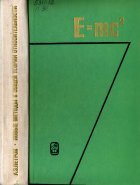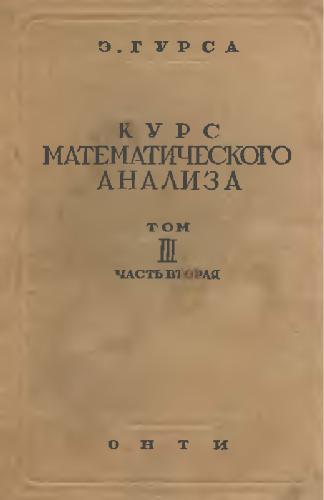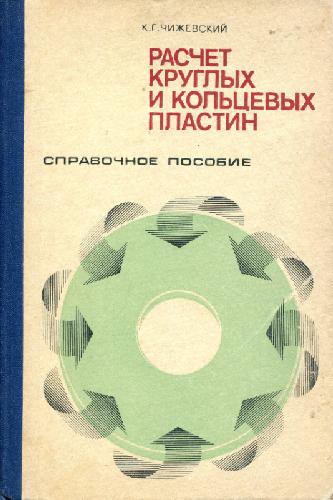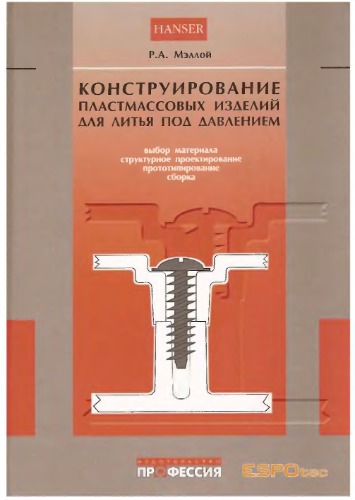- 2 402 202 книги
- Поиск
libcats.org












Physics 2000. Calculus 2000
Huggins E.R.ABOUT THE COURSEPhysics2000 is a college level introductory physics course that begins with special relativity, ends with quantum mechanics, and in-between covers the usual topics with a 20th century focus. This approach eliminates the great divide between classical and modern physics.BEGIN WITH SPECIAL RELATIVITY?Introducing Einstein's special relativity in Chapter 1means that you cannot rely on the usual mathematical techniques because no mathematics has been discussed yet. You have no choice but to focus on the physical ideas like the behavior of clocks and measurements of distance. The result is that you remove the mathematical fear factor usually associated with the subject. The only mathematics you need is the Pythagorean theorem.Compare this with the standard approachthat introduces special relativity after discussing Maxwell's equations. You have just introduced the students to integral-differential equations, you hit them with complex historical arguments about the search for ether, and then present some really weird physics. Fortunately the course is about over, so that you do not have to expect the students to get it.END WITH QUANTUM MECHANICS?Once you have finished with Maxwell's wave theory of light, you can proceed directly to the photoelectric effect, and the particle nature of light. You can do this because the students already know special relativity and are fully prepared to handle the simple mechanics of photons. The contrast between light waves and light particles sets the stage for a discussion of the particle-wave nature of matter, which is at the heart of quantum mechanics.THE PHYSICS IN-BETWEENStrobe photographs are used to provide an intuitive introduction to calculus concepts. Using Feynman's recoil definition of mass, one sees from a simple thought experiment that mass must increase with velocity. The unity of electricity and magnetism is shown by deriving the magnetic force law as a relativistic correction to Coulomb's law. The particle-wave nature of matter plays an equally important role in the text as mechanics and E&M.THE MATHEMATICAL LEVEL?On the bookshelves you will find books with names like Physics for Poets, Non-Calculus Physics, College Physics, University Physics, and Physics for Scientists and Engineers. These are texts with more or less the same content, written at progressively higher mathematical levels.We take a different approach.The idea is to present the physics in the clearest and simplest way possible, and let the companion text Calculus2000 introduce the more complex mathematics.Part 1 of Physics2000 uses physics to teach calculus.The definitions of velocity and acceleration are introduced through strobe photographs. The concept of taking the limit as delta t goes to zero corresponds to turning the strobe rate all the way up. In two chapters we compare the use of calculus and the use of the computer in handling physics problems. It is not until we get to potential energy, half way through Part 1 that we begin to rely on some previous knowledge of integration. Part 2, chapters on electricity and magnetism, do rely on calculus.The focus is on surface and line integrals, which are discussed in detail. All the calculus needed for the entire physics course is taught in Chapter 1 of Calculus2000. For the student with a more advanced mathematical background,Calculus2000 takes subjects in Physics2000 to a higher mathematical level. Complex variables are used in the discussion of circuit theory, the concepts of divergence and curl lead to new insight into Maxwell's and Schrödinger's equations, and the final chapters of Calculus2000 provide an introduction to fluid dynamics, covering such topics as the Navier-Stokes equation, the Helmholtz theorem, and quantum vortices.
Популярные книги за неделю:

Проектирование и строительство. Дом, квартира, сад
Автор: Петер Нойферт, Автор: Людвиг Нефф
Размер книги: 20.83 Mb

Система упражнений по развитию способностей человека (Практическое пособие)
Автор: Петров Аркадий НаумовичКатегория: Путь к себе
Размер книги: 818 Kb

Сотворение мира (3-х томник)
Автор: Петров Аркадий НаумовичКатегория: Путь к себе
Размер книги: 817 Kb

Радиолюбительские схемы на ИС типа 555
Автор: Трейстер Р.Категория: Электротехника и связь
Размер книги: 13.64 Mb
Только что пользователи скачали эти книги:

Фэнтези 2007
Автор: Пехов Алексей, Автор: Ночкин Виктор, Автор: Уланов Андрей, Автор: Олди Генри Лайон, Автор: Громыко Ольга, Автор: Харитонов Михаил, Автор: Логинов Святослав, Автор: Осояну Наталия, Автор: Новак Илья, Автор: Аренев Владимир, Автор: Нестеренко Юрий, Автор: Точинов Виктор, Автор: Балабин Михаил, Автор: Бондарев Олег, Автор: Челяев СергейКатегория: Фэнтези
Размер книги: 1.23 Mb

Новые методы в общей теории относительности
Автор: Петров А.З.Категория: Physics, Gravitation
Размер книги: 5.56 Mb

Условия и факторы развития малого предпринимательства в регионах РФ. Отчет по результатам общероссийского исслед.М., ВЦИО
Автор:Категория: Бизнес коммерция предпринимательство
Размер книги: 11.53 Mb

Курс математического анализа. Т.3 Ч.2 Интегральные уравнения. Вариационное исчисление
Автор: Гурса Э.Категория: Mathematics
Размер книги: 3.77 Mb

Расчет круглых и кольцевых пластин. Справочное пособие
Автор: К.Г. ЧижевскийКатегория: Tech, Сопротивление материалов
Размер книги: 3.14 Mb

Христианство и ислам в контексте современной культуры: Межрелигиозный диалог в России и на Ближнем Востоке: Коллективная монография
Автор:Категория: Культура. Культурология
Размер книги: 4.70 Mb

Murray and Nadel's Textbook of Respiratory Medicine, 5th Edition
Автор: Robert J. Mason MD, Автор: V. Courtney Broaddus MD, Автор: Thomas Martin, Автор: Talmadge King Jr. MD, Автор: Dean MD Schraufnagel, Автор: John F. Murray MD DSc(Hon) FRCP, Автор: Jay A. Nadel MD DSc(HON)Категория: Медицина
Размер книги: 56.44 Mb

Конструирование пластмассовых изделий для литья под давлением
Автор: Мэллой Р.А.
Размер книги: 7.53 Mb




